Breathing and Implementing Pilates Movements Through Your Pregnancy Journey by Nikki Oh
body image for moms graduate projects mental health postpartum ppi graduates pregnant Mar 24, 2025
Pregnancy can be a wonderful experience, however it can also bring its own set of challenges. As your
body adapts, it's essential to maintain strength, flexibility, and mental clarity, incorporating mindful
breathing and moving the body through Pilates can provide relief from common pregnancy discomforts
and help prepare your body for labour and recovery. In this blog post, we’ll explore the breathing
techniques, its benefits & Pilates exercises specifically tailored for pregnancy—helping you to stay strong,
centred, and connected to your body throughout your entire journey.
Beginners: Movements can be done on the chair for better support.
Intermediate/Advanced: Movements can be done on the ball –
offers more challenge in core stability & balance.
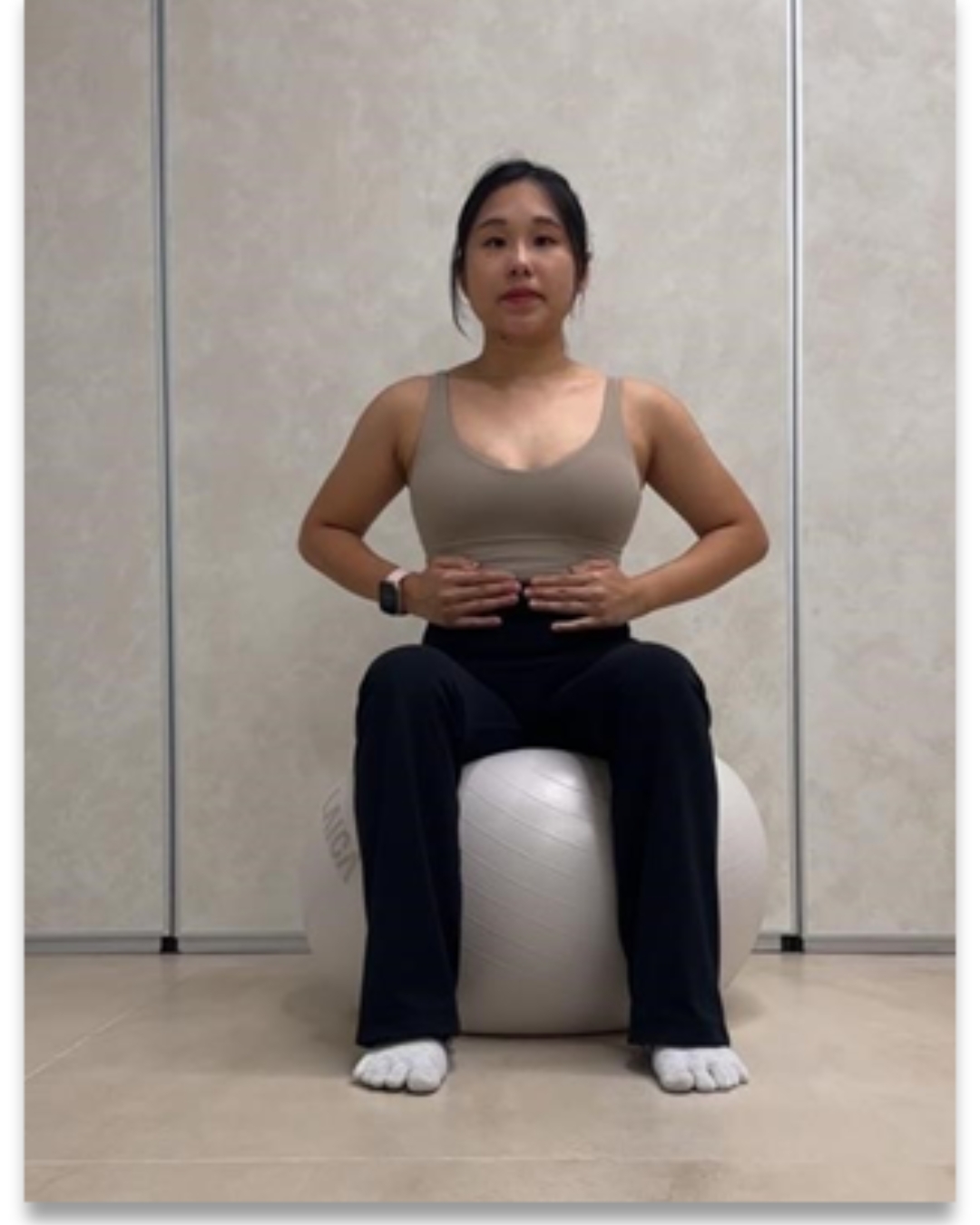
1. Lateral Thoracic Breathing (or 360 breathing)
Benefits:
To create space for your growing baby.
Helps lengthening the spine and stretch the ribcage.
To provide more oxygen flow for you and your baby,
relieving stress and calming the nervous system.
Conditioning of the pelvic floor and diaphragm
connection.
Movement:
Set up: Sitting up tall with the spine elongated, both hands around the ribcage. (This movement
can be done sitting, standing, all 4s with palms on the mat/ carriage or even in an elevated supine
position depending on how you would like to practice the breathing)
Inhale through the nose, feeling the ribcage expand to the side.
Exhale through the mouth, imagine pressing your lips closer together as if you’re blowing a
candle expelling the air out from the ribcage.
Take several breaths, aiming to direct the inhalation to the anterior, lateral & posterior side of the ribcage.
Note: For mums who are in their 3rd trimester, if they feel shortness of breath as the uterus is pushing up
on the diaphragm, try inhaling for 5 seconds, exhaling for 8 seconds, this will help alleviate the
discomfort.
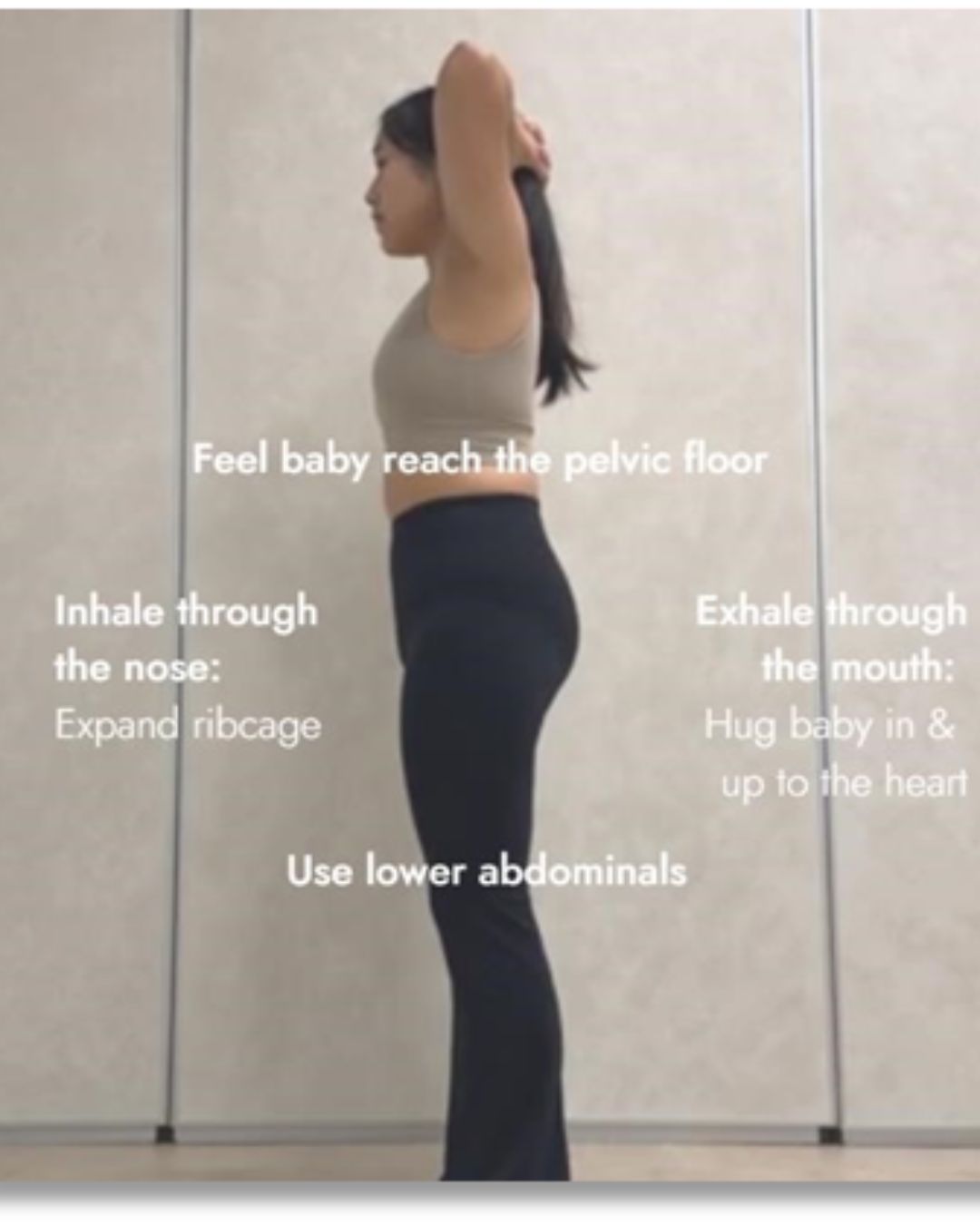
2. Hug the baby
Benefits:
Prevents and relieves lower back pain.
Helps with natural healing process of DR (diastasis recti)
in the postnatal period.
Encourages gentle support of the core, allowing more room
for mobility.
Supports pelvic joints, reducing pelvic discomfort which is
a common experience.
Movement:
Set up: Hands behind the head & elongate the spine to the
ceiling, imagining you are a queen, standing up tall.
Inhale: Expand the ribcage to the sides, feeling baby
reaching to the pelvic floor.
Exhale: Using the lower abs to exhale, hug the baby in to the back & up to the heart.
On each inhale and exhale, constantly elongate the spine while grounding the feet heavy.
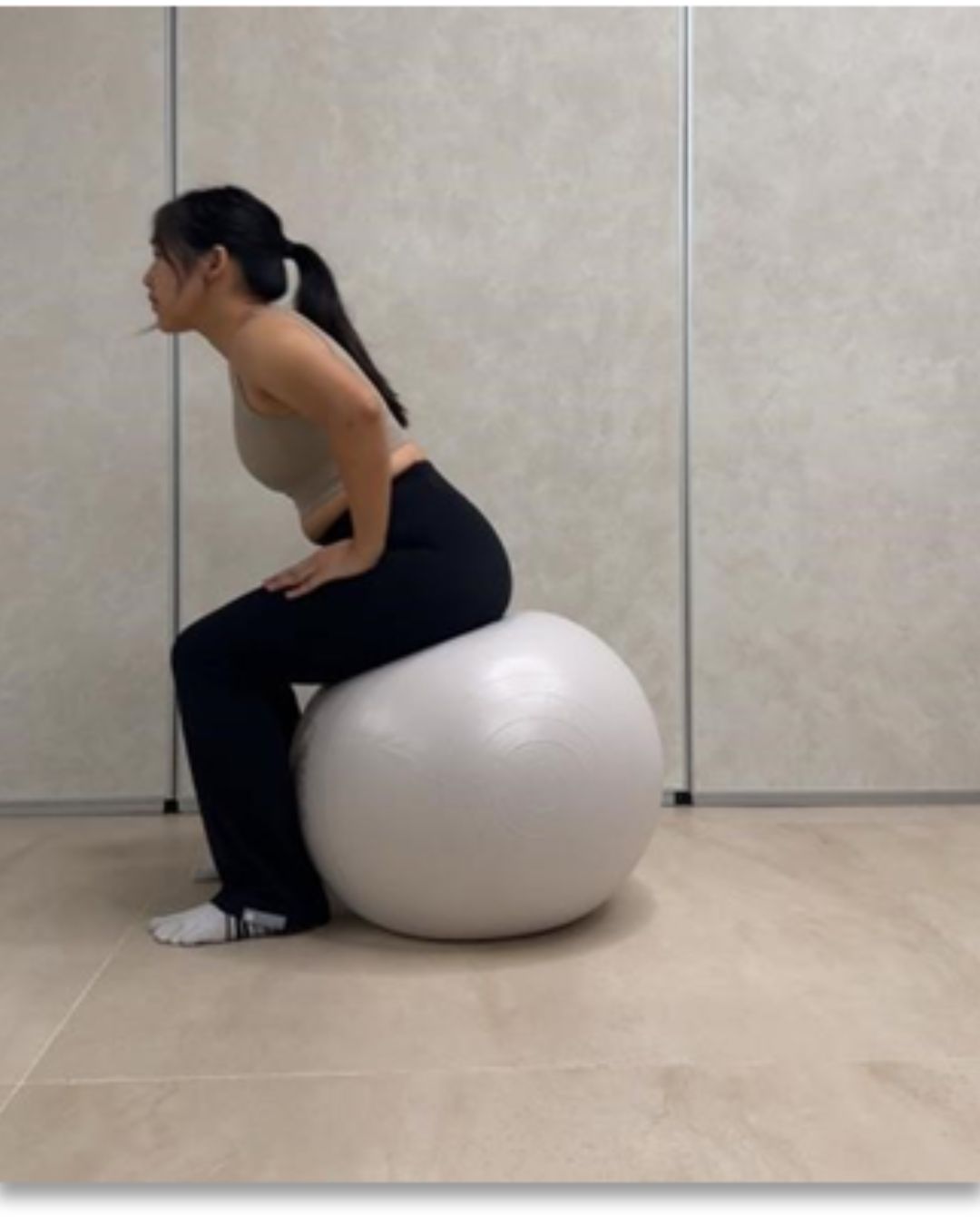
3. Hip hinge & forward squat
Benefits:
Help opens the pelvic region, which reduces pelvic pain.
Strengthens thigh muscles, hip & knee joints.
Challenges core stability.
Movement:
Set up: Sitting on the chair with hands on the thighs and feet is
hip-distance apart.
Inhale: Hinge the body forward & free the baby by expanding the
ribs like filling a balloon with air while feeling the baby reach
down to the pelvic floor.
Exhale: From the lower abs, hug the baby by exhaling in to the
back and up to the heart while using the glutes to stand up.
Inhale: Hinge the hips back & hinge body forward with straight back to sit back down.
Note: By practicing hugging and freeing the baby on each exhale when you move, such as carrying the
groceries, lifting your child or also pushing/pulling heavily weighted objects can help to assist you in core
control and resilience during pregnancy in your daily life.
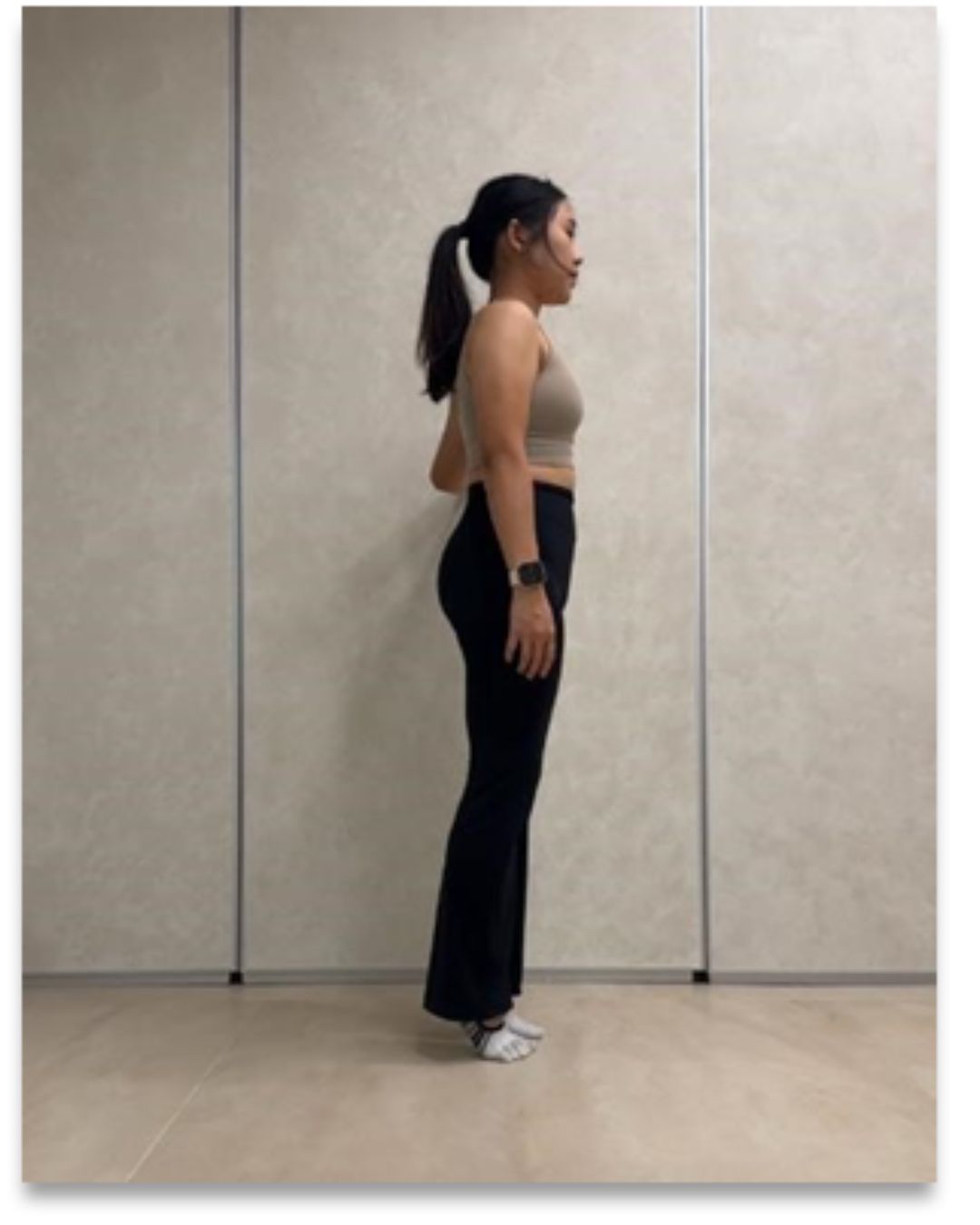
4. Ankle exercise
Benefits:
Improves circulation in the legs & improve ankle mobility.
Helps prevent swelling in the feet.
Movement:
Set up: Standing with 1 hand holding onto a chair/against a wall.
Both feet are hip distance apart & feet are in parallel position.
Inhale: Free the baby.
Exhale: Hug the baby & lift the heels up.
Inhale: Lower heels down & free the baby.
Note: This movement is also similar to the reformer: footwork – ankle
exercise/heel raises that involves dorsiflexion and plantarflexion of
the ankle joints.
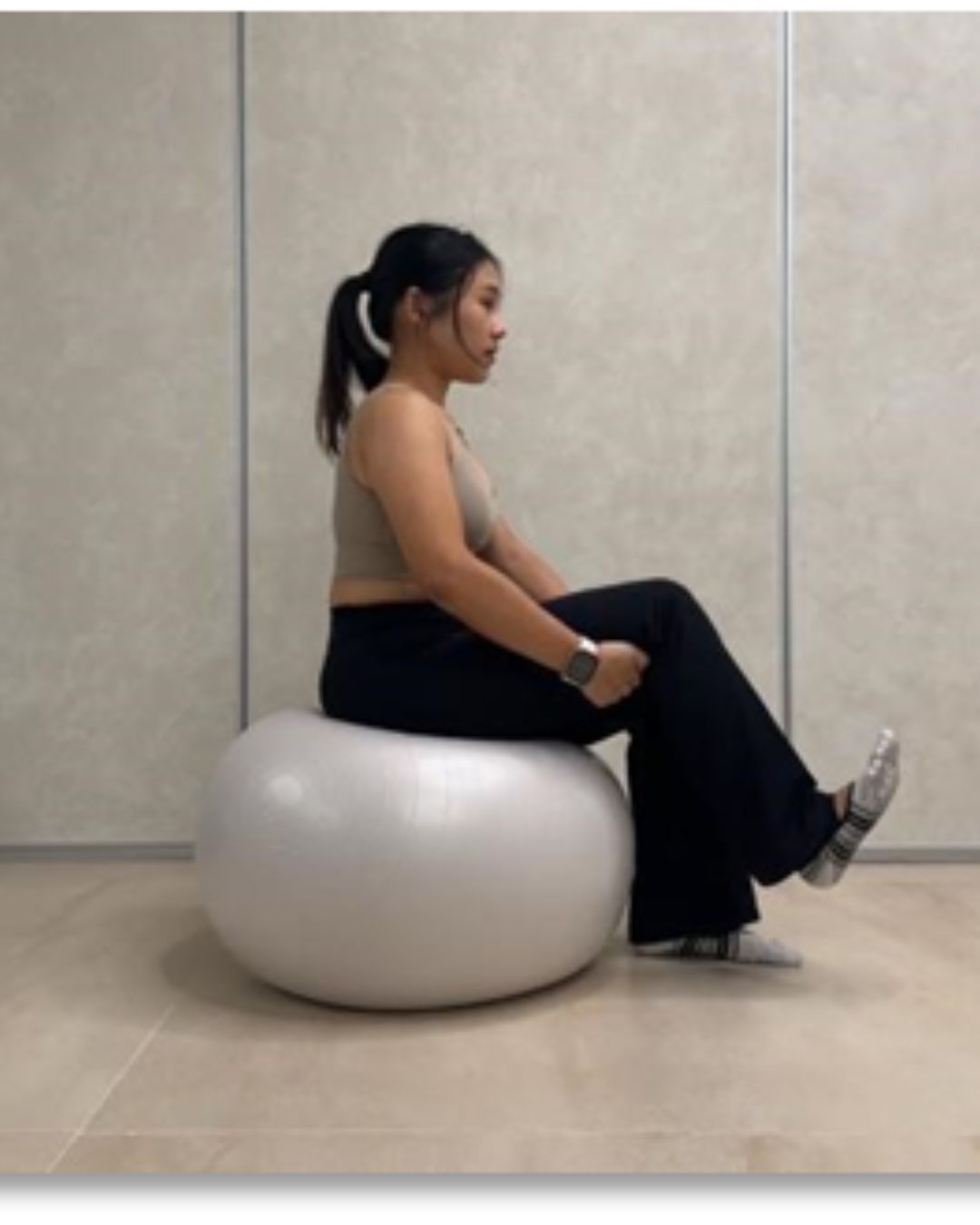
5. Ankle circles
Benefits:
Improve circulation to the feet.
Reduce swelling of the feet and ankles.
Improve mobilisation of the feet.
Movement:
Set up: Sitting on a chair with both feet hip distance apart,
hug the baby to lift the foot slight off the ground.
Inhale: Circle the ankles outwards and downwards.
Exhale: Circle the ankles inwards and upwards, drawing the motion of a circle clockwise and
anticlockwise.

6. Chest expansion with head rotation
Benefits:
Opens the chest up as scapula would retract – this is good
for mums-to-be as they tend to protract their shoulders when
breastfeeding or carrying their child.
Helps relieve neck tension from sitting.
Movement:
Set up: Sitting on a chair with hands out by the hips, keeping the
spine elongated.
Inhale: Ready.
Exhale: Hug the baby as mums send their arms behind hip line
& rotate the head to 1 side.
Inhale: Return arms to hip line and head rotates back to centre.
Exhale: Repeat the other side.
Note: This movement can be done on the reformer with hands in straps in a low/high kneeling position
facing the back of the machine.
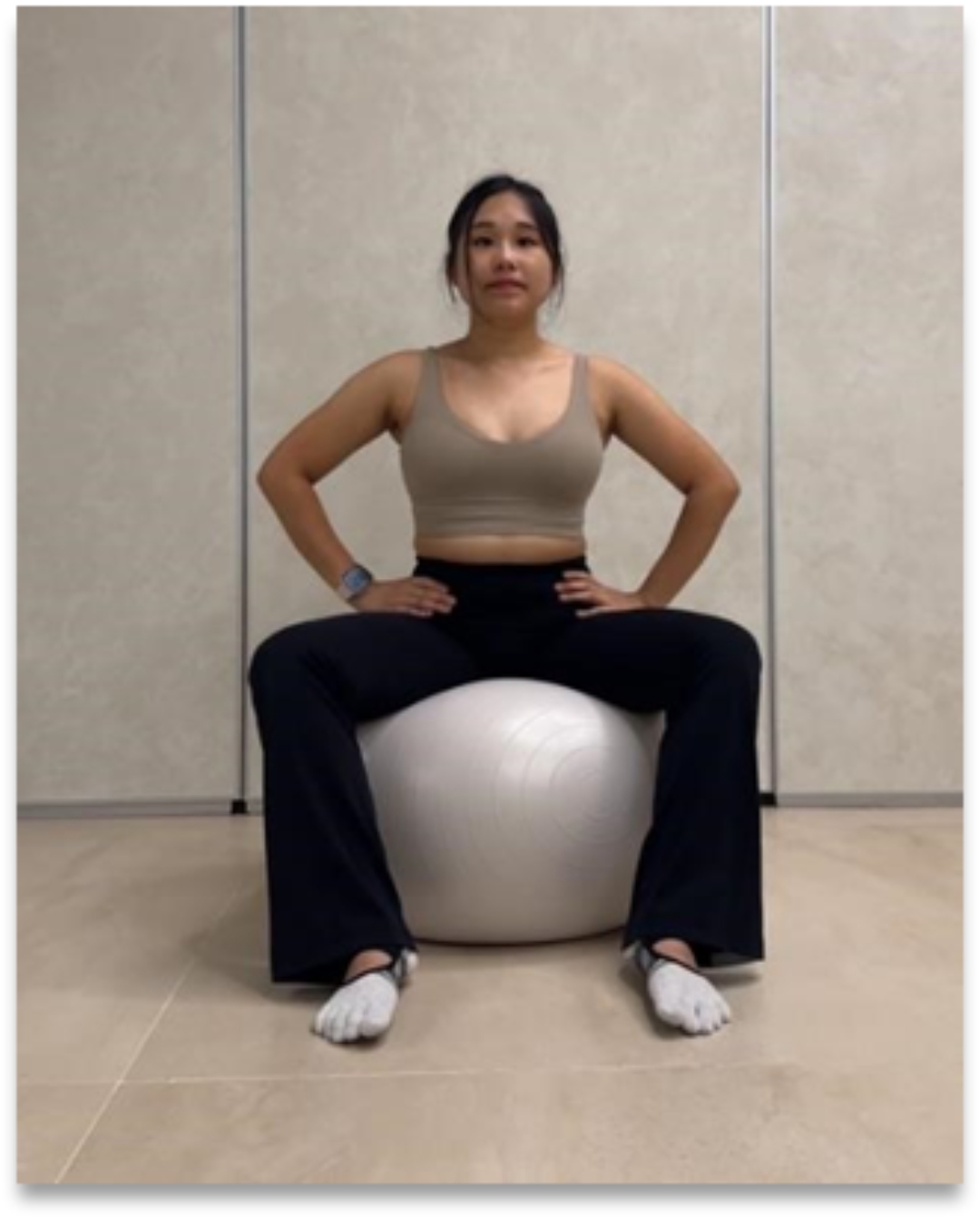
7. Seated zig zags
Benefits:
Increase mobility of hip joints.
Improve coordination between hip, knee & ankle joints.
Improve stability of the spine.
Movement:
Set up: Sitting on a chair with hands on the hips, or place both
hands beside the chair for more support.
Inhale: Draw the knees & touch them together.
Exhale: Open the knees out the side.
Note: Constantly keeping the elongation of the spine when executing the
movement.
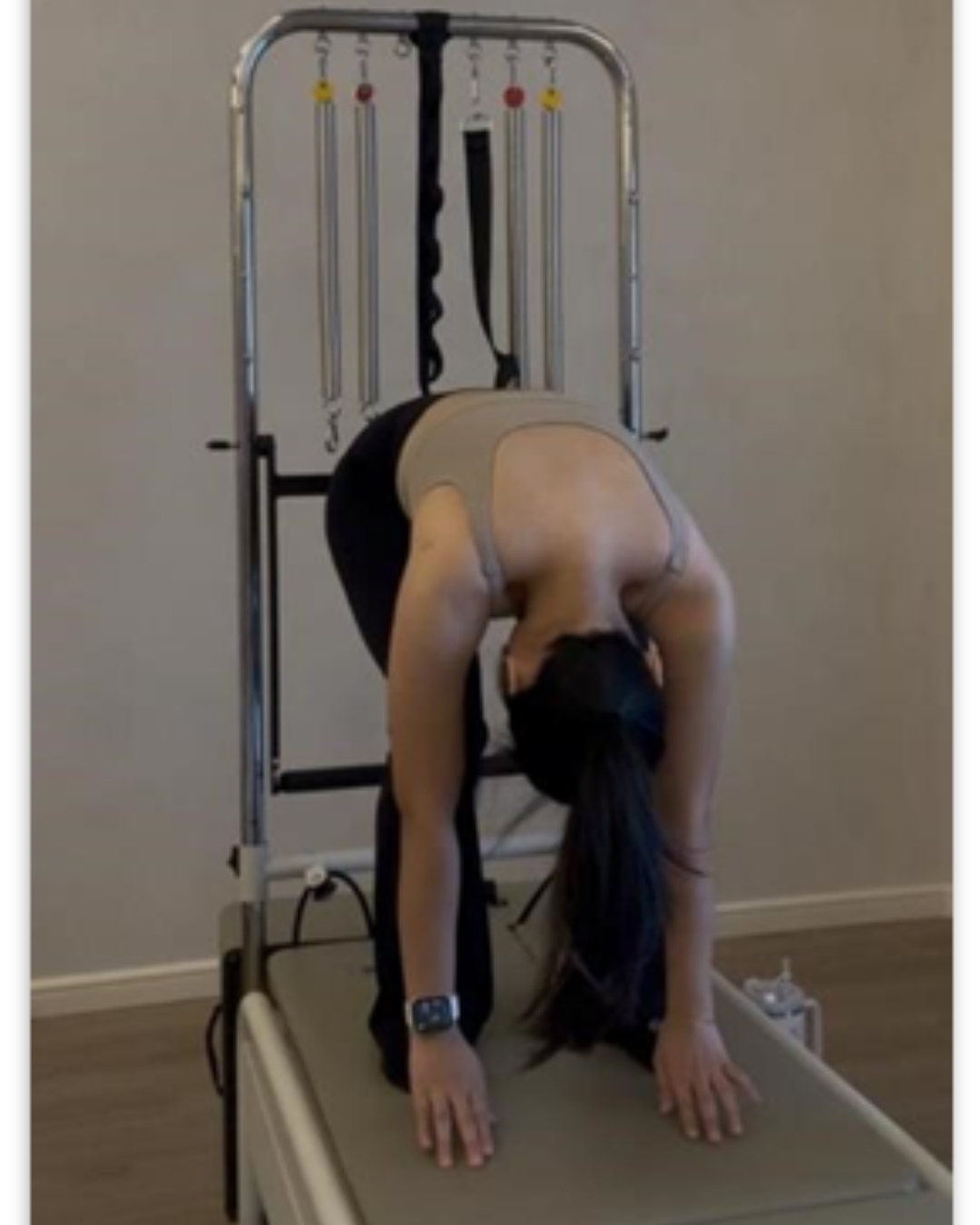
8. Standing roll-ups & roll-down
Benefits:
Allow mums to execute the movement without additional intra-
abdominal pressure from the supine roll-up.
Alleviates discomfort for the organs & lower back when roll down
with knees bent & hips hinged back, helping mums to balance in
the upright position.
Reduces tightness in the hamstrings.
Movement:
Set up: Standing up tall with feet hip distance – keeping chest open
with hands on thighs.
Inhale: Knees slightly bend to prepare.
Exhale: Tucking the chin to chest, rounding the spine as they roll down from the upper abs, middle
abs and lower abs, allowing fingertips to walk down to their feet.
Inhale: Sequentially roll your spine up from lower abs, middle abs, upper abs as your fingertips
walk up from the feet to your thighs – standing proud and tall.
Note: Constantly keeping the knees bend when rolling down, so that the tension doesn’t get directed to
the lower back.

9. Gentle hanging (with feet on the ground/box)
(As the frame is slightly higher, a box is needed to reach comfortably.)
Benefits:
Lengthens the spine & stretches through the torso – making space for
baby to grow.
Relieves lower back pain.
Relieves discomfort of the uterus pressing against ribs and organs.
Movement:
Set up: Feet is hip-width. Hands on the upper frame – shoulder distance
apart with rib cage neutral.
Inhale: Ready – free the baby.
Exhale: Hug the baby as mums slightly bend their knees to allow length in the spine.
Note: Just keep breathing comfortably & allow shoulders to relax or be in neutral to avoid tension in the
upper trapezius.

10. Feet exercises
Benefits:
Great proprioceptive exercise for feet awareness – assist in
improving balance & stability.
(As relaxin is present in the body, new mums might feel slightly
challenged in their balance & stability.)
Movement:
Set up: Feet is hip-distance (barefoot) with hands against wall if standing
on the floor or frame of the Cadillac/tower – this will help mums to open
their chest.
Variations:
- Lift & lower toes.
- Sliding the toes towards the heels/clenching the toes.
(This is to recognise the arch of the feet, as there is a myth of mums’
feet getting bigger, but it’s due to the collapse of the foot arch that’s also known as flat feet)
- Tilting the body side to side – shifting weight of foot from right to left foot.
- (Hands against the wall) Drawing a circle with the body clockwise and anticlockwise.
Note: Just keep breathing comfortably when executing the movement, exhaling each time the toes
lift/move or when the weight is shifted on the body or feet.
Conclusion:
All in all, pregnancy can bring up a lot of emotions about body image as the body goes through profound
changes. Pilates is not just about building physical strength—it’s also about cultivating awareness of how
thoughts can impact the body. By practicing the lateral thoracic breathing techniques in Pilates, this can
help perinatal women to connect to their breath, reduce tension, and promote relaxation. By becoming
aware of how stress and emotions manifest physically, perinatal women can learn to manage discomfort,
calm anxiety, and stay centered, which can be especially beneficial during pregnancy and the
postpartum period.
Not only that, by improving your core strength, pelvic floor health and posture during pregnancy through
Pilates, this can help relieve common discomforts such as back pain, and improves stability and mobility
in pre & postnatal women. Furthermore, it supports the healing process after birth, enabling a quicker
and more comfortable recovery.
With every movement, new mums can have a better mind-body connection which allows you, as a strong
woman to strengthen your body, calm your mind, cultivating patience and love for yourself during your
pre and postnatal period. This journey is not just about physical fitness but about developing a lasting
connection with your body, empowering you to embrace this transformative time with confidence,
strength, and grace.
Bio:
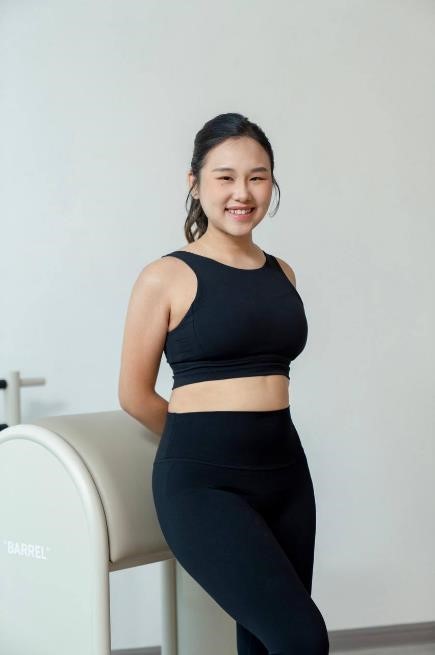
Hi there! I’m Nikki Oh, a Pilates instructor in Malaysia with over 3 years of
experience guiding clients through mindful movement as I believe Pilates is for
every body and everybody and there is always option for everyone.
I’ve been fortunate enough to train and receive my Pilates certification through
renowned organisations such as Barre Body (AU) and most recently, .Fonv Pilates
Association (KR), ensuring I offer the most up-to-date and effective Pilates
techniques to my clients and the community.
For the last two years, I’ve focused on helping pre and postnatal women feel
empowered and supported throughout their journeys. I understand that this
unique stage in life requires both care and precision, and my passion is to help
women regain strength, flexibility, and confidence through every phase.
My goal is not only to provide effective workouts but to connect with each client
in a way that makes them feel seen, heard, and supported in their fitness and
wellness goals. If you are a Pilates instructor or fitness enthusiasts, let’s connect!
Instagram: pilateswithnikkioh
Email: [email protected]
